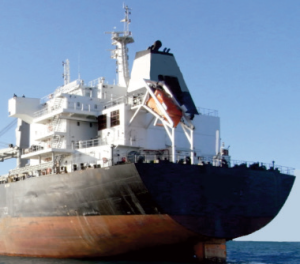The Charity
Aviation
Maritime
Free fall lifeboat release jammed

Initial Report
 Report Text: During an abandon ship drill we encountered difficulty in releasing the free fall lifeboat from its stowed position due to the moveable parts being stuck in the stowed position. The procedure for performing the simulation test was missing on board the vessel.
Report Text: During an abandon ship drill we encountered difficulty in releasing the free fall lifeboat from its stowed position due to the moveable parts being stuck in the stowed position. The procedure for performing the simulation test was missing on board the vessel.
Causal factors: Failure to follow planned maintenance inspections resulted in inadequate maintenance due to guidelines not being followed.
Preventative action: The matter was discussed on board. The frequency of testing the release mechanism is important as it clearly detected a fault at the time of the simulation test. The ship managers agreed with the vessel’s comments that the release mechanism should be tried out frequently, i.e. checked once a month and the parts well greased to prevent corrosion of any touching parts that can cause the jamming of the release system.
CHIRP Comment
This incident is a failing of the pre – ventative maintenance system and it is surmised that the practice of not correctly maintaining the equipment may be due to adverse weather, or the trading pattern. More controversially the “simulated launch” training has been at the centre of concern within the industry, causing some to question the value of the exercise. Furthermore, CHIRP has been made aware of a relaxation of the requirement to launch freefall lifeboats by some Classification Society surveyors, acting on behalf of flag states, but it is understood that this is not universal. “When designing and certifying equipment such as onload release systems for lifeboats, all facets of the equipment’s possible operation, use and environment must be taken into account and allowed for. Only then can fully comprehensive instructions be documented, enabling seafarers and others to safely use and maintain the equipment under all conditions.”
CHIRP will welcome comments on a suggestion that shoreside training for freefall launching could be a suitable and prudent alternative to shipboard exercises. It has been suggested that it would not expose strops, often of wire; to repeated shock loads and it would not rely on the careful monitoring of the condition of the exposed equipment and accurate resetting of on-load release gear, all of which could influence the success or failure of the exercise. The training would not be unlike that used to train offshore workers in helicopter ditching. It is also accepted that gear should remain subject to some system of testing as is conventional with lifting gear but it should not involve such regular human exposure.







